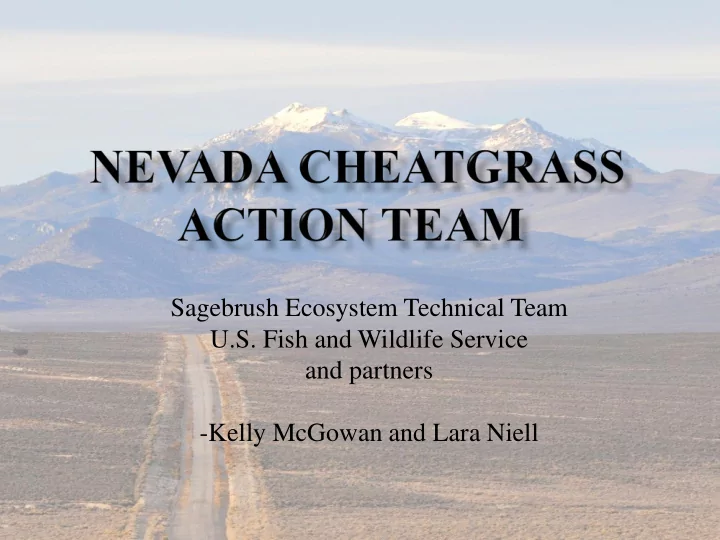

Sagebrush Ecosystem Technical Team U.S. Fish and Wildlife Service and partners -Kelly McGowan and Lara Niell
University, state and federal agencies partnered with private land owners to implement and evaluate treatments on the ground to stop the dominance of cheatgrass Organized by the USFWS, lead by the SETT Private Land Owners Southern Nevada Water Authority (August 29) Newmont Mining (October 15 and 16) Smith Creek Ranch (November 20)
Identified three site scenarios and possible treatment options Intent is to replicate these across three properties with livestock grazing as a variable Site scenarios Cheatgrass dominated site Mix of cheatgrass and native perennials with minimal shrub component Sagebrush community with depauperate understory
TREATMENT PURPOSE Herbicides alone and in combination with seeding/seedlings Breakup homogenous Targeted fall grazing in combination landscape with seeding Establish native species Compare different drill types with and/or forage kochia to seeding to compare recruitment provide habitat/reduce fire success risk Establish islands on slopes using snow drift fences Potential for watering option ACK55 - Biocontrol
PURPOSE TREATMENT OPTIONS Targeted grazing on Reduce cheatgrass during cheatgrass to green up release native perennials High intensity and short duration Compare spring grazing to small exclosures
PURPOSE TREATMENT Interseeding Restore native Herbicides perennial understory to Transplants increase resilience
Work with landowners to further identify specific site locations and treatment options Assemble an experiment design team If needed, gather baseline data On federal land, seek approval to proceed Seek/apply for funding Implement treatments Data collection Review, adjust, and repeat
Recommend
More recommend